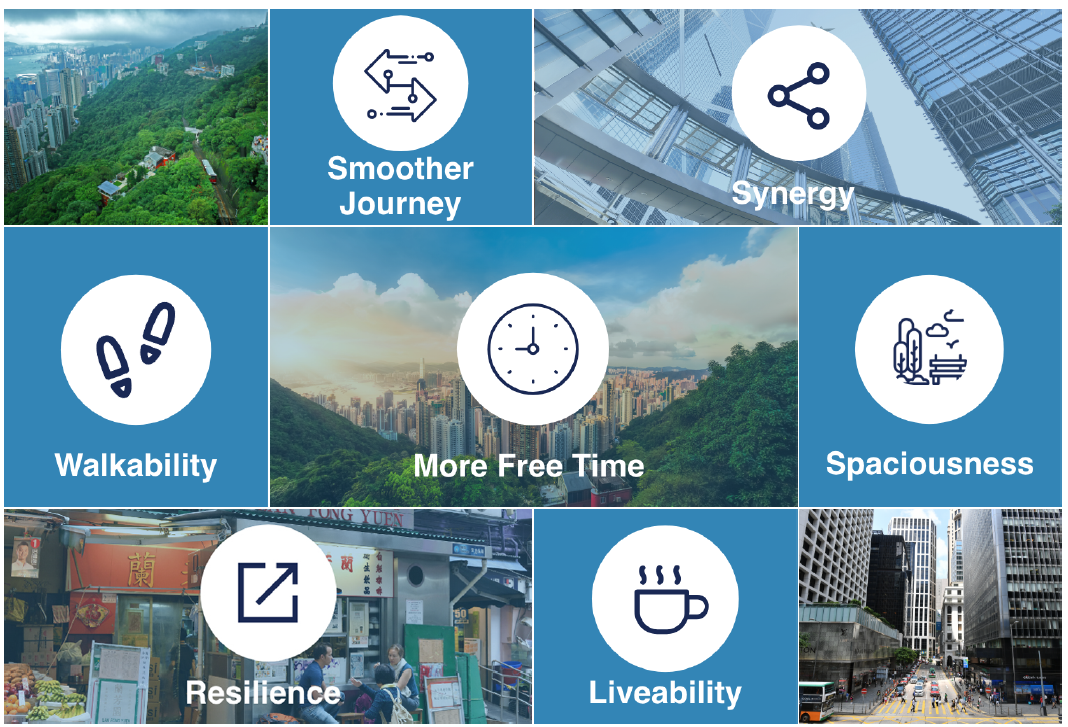In 2017, the Government commenced a Feasibility Study (the Study) on the ERP Pilot Scheme in Central and its adjacent areas. The Study includes developing the ERP Pilot Scheme, assessing its overall effectiveness in alleviating traffic congestion in Central, and ascertaining economic and environmental benefits, as well as exploring system technology options and devising privacy protection measures.
In 2020, the Government set up an International Expert Panel comprising members from the United Kingdom, the United States of America, Singapore, Sweden, and Hong Kong to offer advice on the implementation of the ERP Pilot Scheme in Central.
The Study was completed on 30 September 2022. With due regard to the traffic conditions of the three road harbour crossings, their adjoining roads and Central upon implementation of toll adjustments, as well as Hong Kong's latest social and economic circumstances, the Government will determine when and how the ERP Pilot Scheme should be taken forward.

"Charging area" is the area covered by an ERP scheme. This area is usually, but not limited to, the central business district of a city where severe traffic congestion occurs frequently.
There are three common types of charging mechanisms, namely "area-based", "cordon-based" and "time-based". Under an area-based charging mechanism, motorists are only required to pay once per day and could enter and re-enter the charging area. Under a cordon-based charging mechanism, vehicles are charged every time they cross the charging boundary within the charging period.
For a time-based charging mechanism, vehicles are charged with levels according to the duration of stay within the charging area, while for area-based and cordon-based charging mechanisms, the duration of stay is not taken into account.
"Charging period" refers to the period during which vehicles will be charged, and normally corresponds to the period that traffic congestion is prevailing.
"Charging level" is the amount of charges to be set with a view to inducing a change in motorists' travel behaviour so as to reduce traffic volume in the charging area to an acceptable level.
All vehicles using the roads within a charging area contribute to traffic congestion, and may thus be subject to congestion charge to varying extent. Whether or not certain types of vehicles or usage of vehicles should be exempted or given concession would have to take into account a host of factors, in particular the effectiveness of the scheme.
There are several common technologies for ERP, including the "Automatic Number Plate Recognition", "Dedicated Short Range Communication", "Radio Frequency Identification" and "Global Navigation Satellite System". Depending on the types of technology to be employed, associated roadside infrastructure (e.g. gantries and poles) would be required.
Overseas experience shows that over 10% reduction of traffic volume in the charging zones could be achieved in Singapore, Gothenburg (Sweden), Stockholm (Sweden), London (United Kingdom), Durham (United Kingdom) and Milan (Italy).
Overseas experience shows that appropriate complementary measures are instrumental in implementing ERP, with the objective of encouraging and facilitating drivers or passengers to make better use of public transport, or to travel to the charging area during non-peak hours.
Adequate protection of privacy is one of the primary public concerns when implementing ERP. With the advancement in technology over the years and more established privacy protection laws, privacy issues could be largely addressed.